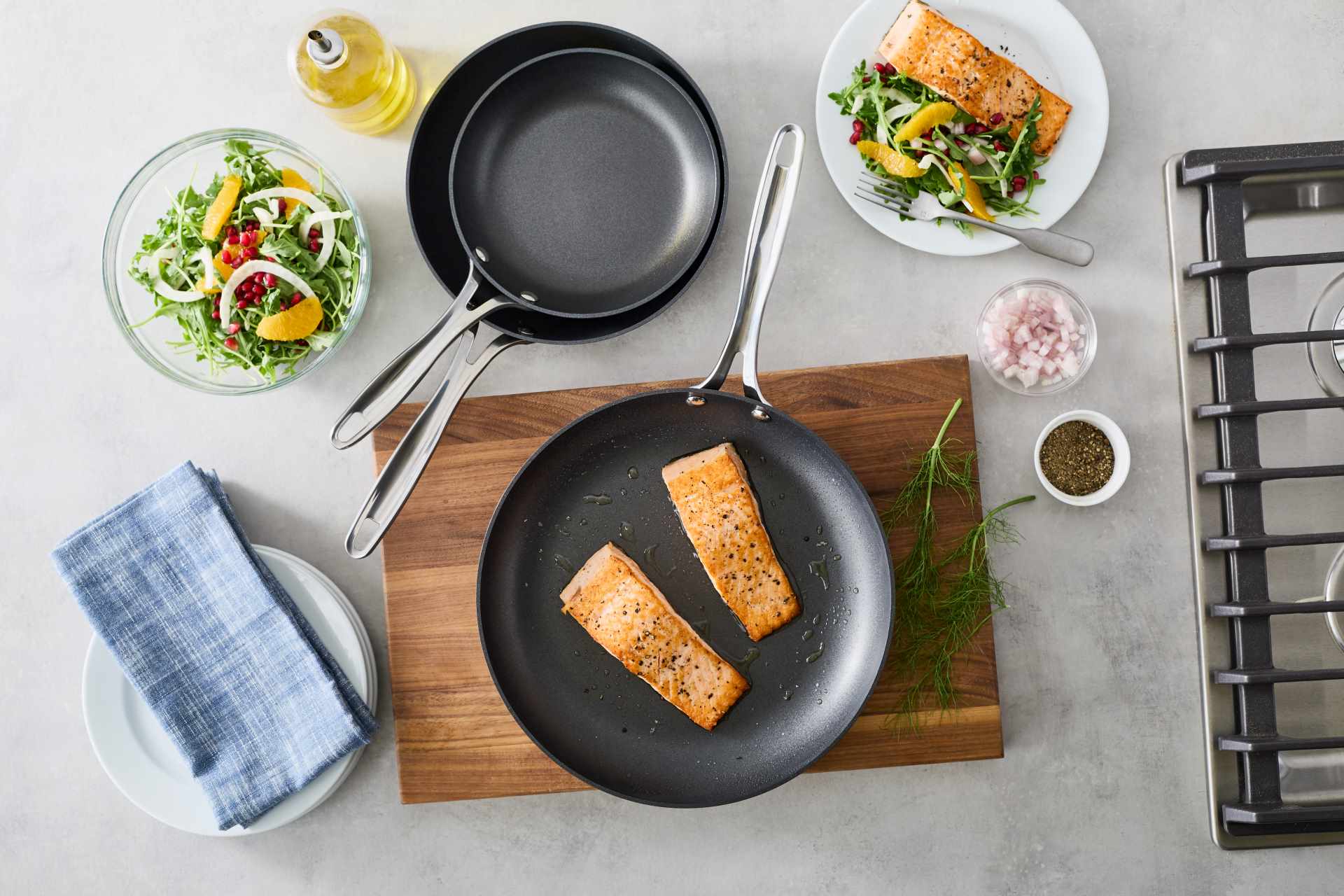Decisions, decisions.


Nonstick pans have revolutionized the cooking world, offering an easy-to-use option for everyone from professional chefs to home cooks. Whether you’re flipping pancakes, sautéing vegetables or searing a delicate piece of fish, nonstick cookware provides a hassle-free cooking experience with minimal cleanup.
But maintaining these pans requires a bit of know-how to ensure they last longer and continue to perform well.
In this guide, we’ll walk you through tips and best practices on how to clean your nonstick pans to keep your cookware in optimal condition, ensuring that every meal you cook is just as enjoyable and successful as the last.
Hungry for more? Expand your kitchen collection with our selection of nonstick cookware from brands you love, like GreenPan, Scanpan, All-Clad and more!
First things first, let’s delve a bit deeper into the world of nonstick pans. These pans are often coated with materials like PTFE (Teflon) or ceramic, creating that magical surface where food slides right off. But this superpower is also their point of vulnerability.
Unlike the more robust stainless steel cookware, nonstick pans have a sensitive surface that can easily be damaged by high heat, abrasive cleaning tools or harsh chemicals. Understanding this distinction is key to preserving the nonstick quality of these pans, ensuring they remain a valuable, functional asset in your kitchen for as long as possible.
The true secret to the longevity of your nonstick pot and pans lies in the daily care they receive. While nonstick surfaces simplify the cooking process, they demand a gentle and mindful cleaning approach to maintain their magic. From the right temperature to the ideal cleaning tools, here’s some tips and best practices that promise to extend the life of your nonstick pans, keeping them as reliable and efficient as the day you first used them.
A scratched nonstick pan is problematic because the scratches can compromise the integrity of the nonstick coating. This degradation leads to two main issues:
In an ideal world, food would effortlessly glide off the surface of our nonstick pans every time we cook, but even the best nonstick surfaces can sometimes face the sticky challenge of food residue. Factors like cooking temperature, food type and the age of the pan can lead to situations where food stubbornly clings on.
Luckily, there are effective and safe methods to clean off stuck-on food, ensuring your pan remains in pristine condition without compromising its nonstick quality. Here are a few tips:
While daily cleaning is crucial for your nonstick pans, there’s another dimension to their care: thoughtful maintenance. This goes beyond the regular wash-up after a meal; it’s about the ongoing practices that safeguard the longevity and effectiveness of your nonstick cookware.
No nonstick pan lasts forever. The lifespan depends on the quality of the pan and how well it’s cared for. As a general rule, if you start noticing that food sticks to the pan or if the coating shows significant wear, it’s time for a replacement.
Hungry for more? Expand your kitchen collection with our selection of nonstick cookware from brands you love, like GreenPan, Scanpan, All-Clad and more!
JOIN THE CONVERSATION